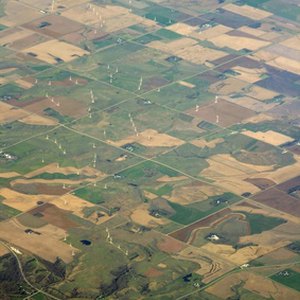
Real estate appraisals utilize a concept known as "highest and best use," which dictates that real estate valuations must make sense in the light of sales of similar properties used for similar purposes, according to James R. MacCrate, of New York City's real estate valuation company MacCrate Associates. He says, "comparable sales should have a similar economic use that produces similar economic benefits" to the property in question. As you research the value of land, it's important to keep this concept in mind.
Go to the official government website of the county in which the land is located. There, click on the link that will take you to the tax assessor's office or real property office.
Search by address, parcel or tax identification number (if you have it), or by the last name of the person who owns the land. If you do not have any of these, search by road, and narrow down the search by clicking on one parcel's information entry, which will probably give you a map link.
Click the map link, and enlarge the map so you can see surrounding properties and their tax identification numbers. Locate the piece of land in which you are interested, and write down its number.
Enter the property tax number in the real property search bar and hit enter to arrive at the property tax information page for that particular piece of land. This page will tell you for how much the property previously sold, give you its dimensions, zoning code and assessed value. If it sold more than a year ago, the selling price may be irrelevant; also, the assessed value for tax purposes is often lower than fair-market value, but knowing that much is a good starting point.
Use successive tax ID numbers to open the information pages for nearby pieces of land to look for those that have sold within the past year. You might also perform this same procedure on nearby comparable roads. Recent sold prices are the best indicators of fair market value, as long as you compare apples to apples. For example, if you are looking at property on a commercial or mixed commercial-residential street and you expect to pay the price that someone recently paid for a residential lot on a nearby side street, you will probably be disappointed; commercial land is worth much more than residential land.
Call the owner or listing agent to find out what improvements the land has; unimproved land is not worth as much as improved land. You could also check to see what improvements have been made by going the Building Inspector's office and inquiring; most improvements require permits and that office will have a record of those permits and related inspections. Improvements might include the addition of service-ready water or gas lines, for example.
Ask a real estate agent to get you comparable sold data (comps) for the area, if there have been any big recent developments that could affect value. The agent can look within the Multiple Listing Service for pieces of comparable land that have sold within the calender year and that do not yet show up on the tax records. Most agents do not charge a fee for this.
Ask for the appraisal documentation, if you plan to male an offer on commercial property. The current owner may have had an appraisal done to arrive a selling price. In any case, if you are financing the property, your lender will order an appraisal.
Tips
If you live in a county that does not yet have real property tax information online, you can go to the physical offices of the tax assessor or real property records, which are often located in a county office building or the county court house. A clerk there will help you to find the records you need.
Each county's property tax website may be a bit different, but they all work in approximately the same way. Don't be afraid to look around.
The zoning code will help you to decide whether two pieces of land are comparable.
Tips
- If you live in a county that does not yet have real property tax information online, you can go to the physical offices of the tax assessor or real property records, which are often located in a county office building or the county court house. A clerk there will help you to find the records you need.
- Each county's property tax website may be a bit different, but they all work in approximately the same way. Don't be afraid to look around.
- The zoning code will help you to decide whether two pieces of land are comparable.
Writer Bio
Cat Reynolds has written professionally since 1990. She has worked in academe (teaching and administration), real estate and has owned a private tutoring business. She is also a poet and recipient of the Discover/The Nation Award. Her work can be found in literary publications and on various blogs. Reynolds holds a Master of Arts in writing and literature from Purdue University.

